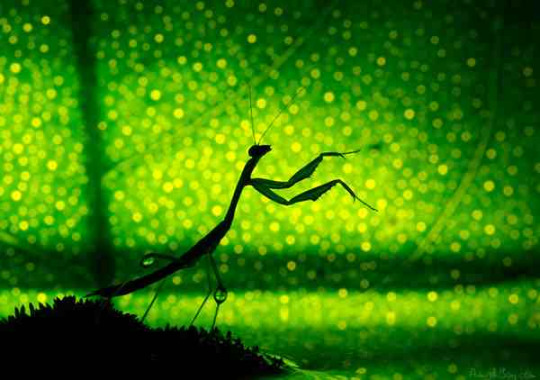#gronja
Text
Green
Green, a color often associated with nature, growth, and renewal, has a rich and fascinating history that dates back to the earliest days of human civilization. The word “green” is believed to have originated from the Old English word “grēne,” which is derived from the Proto-Germanic word “gronja.” The color green has been an important part of many cultures and has been used for everything from…

View On WordPress
#absinthe#antioxidant#aventurine#baroque#chartreuse#chrysoprase#dionysus#emerald#erik the red#feudalism#green#grene#gronja#isis#malachite#onyx#proto-germanic#the green knight#tourmaline#verdigris#vitriol
0 notes
Text
Green – In Depth

Published November 18, 2016 | By shirleytwofeathers
When students were given creativity tests, those whose test-cover pages had a green background gave more creative answers than those whose pages were white, blue, red or grey. ~Sue Shellenbarger
Since the beginning of time, green has signified growth, rebirth, and fertility. In pagan times, there was the “Green Man” – a symbol of fertility. In Muslim countries, it is a holy colour and in Ireland, a lucky colour. It was the colour of the heavens in the Ming Dynasty.
The word green comes from the Middle English and Old English word grene, which, like the German word grün, has the same root as the words grass and grow.
It is from a Common Germanic *gronja-, which is also reflected in Old Norse grænn, Old High German gruoni (but unattested in East Germanic), ultimately from a PIE root *ghre– “to grow”, and root-cognate with grass and to grow.
The first recorded use of the word as a colour term in Old English dates to ca. AD 700.
Latin with viridis (and hence the Romance languages, and English vert, verdure etc.) also has a genuine term for “green”. Likewise the Slavic languages with zelenъ. Ancient Greek also had a term for yellowish, pale green – χλωρός, chloros (cf. the colour of chlorine), cognate with χλοερός “verdant” and χλόη “the green of new growth”.
For the ancient Egyptians, green had very positive associations. The hieroglyph for green represented a growing papyrus sprout, showing the close connection between green, vegetation, vigour and growth.
In wall paintings, the ruler of the underworld, Osiris, was typically portrayed with a green face, because green was the symbol of good health and rebirth.
Palettes of green facial makeup, made with malachite, were found in tombs. It was worn by both the living and dead, particularly around the eyes, to protect them from evil. Tombs also often contained small green amulets in the shape of scarab beetles made of malachite, which would protect and give vigour to the deceased.
It also symbolised the sea, which was called the “Very Green. Interestingly, in Japan, the words for blue and green (“ao“) are the same.
Today, green is no longer just a colour. It’s now the symbol of ecology and a verb. Today’s greens can be found in a wide range of objects: pea soup, delicate celadon glazes, sleazy shag carpet, sickly bathroom walls, emeralds, wasabi, and sage. The English language reflects some strange attributes: Would you rather be green with envy, green behind the ears, or green around the gills? (Idiomatic American English for extremely envious, immature or nauseated.)
Green in other cultures:
Green is usually considered lucky. A green shamrock symbolises this. However, this is not always true in every culture, venue, or situation. For example:
You won’t find many green cars at racetracks because they are considered unlucky.
Circus and travelling showmen in Australia may consider green to be bad luck.
An old English rhyme about wedding colours: “Married in green, Ashamed to be seen.”
In China, Green may symbolise infidelity. A green hat symbolises that a man’s wife is cheating on him.
In Israel, green may symbolise bad news.
In Spain, racy jokes are “green.”
Seeing Green:
There are more shades of green than that of any other colour. Greens range from yellow-greens, such as lime and avocado greens, to those with a blue tinge (such as emerald). Aqua or turquoise are colours that are typically half green and half blue.
Colour Blindness – Approximately 5% – 8% of men and 0.5% of women of the world are born colourblind. People who are protans (red weak) and deutans (green weak) comprise 99% of this group.
Some European countries have outlined certain traffic light colours so that it is clear which is green and which is red, by the colour that has a rectangle around it. Some states in the U.S. have placed diagonal lines through green traffic lights as an aid for the colourblind.
Green exit signs have an important advantage when there is smoke in the air (in other words, when a fire is burning). With red exit signs, it looks like a fire – firemen have actually rushed into burning buildings and tried to put out the signs! With a green sign, people know it isn’t the fire itself but the way to safety.

Spectral coordinates:
Wavelength: 520-570 nm
Frequency: 575-525 THz
Colour coordinates:
Hex triplet: 00FF00
sRGBB: (0, 255, 0)
https://shirleytwofeathers.com/The_Blog/colortherapy/category/the-colors/green/
0 notes
Link
New chapter :)
1 note
·
View note
Text
Gronja in Claw
Can you spot it? The Nonchalant Nommer of hibiscus blossoms! I got a little excited when I spotted it…and then it got a bit excited when it spotted me spotting it. I wanna green Arawak iwana! via Blogger http://ift.tt/2lh62jj
View On WordPress
0 notes